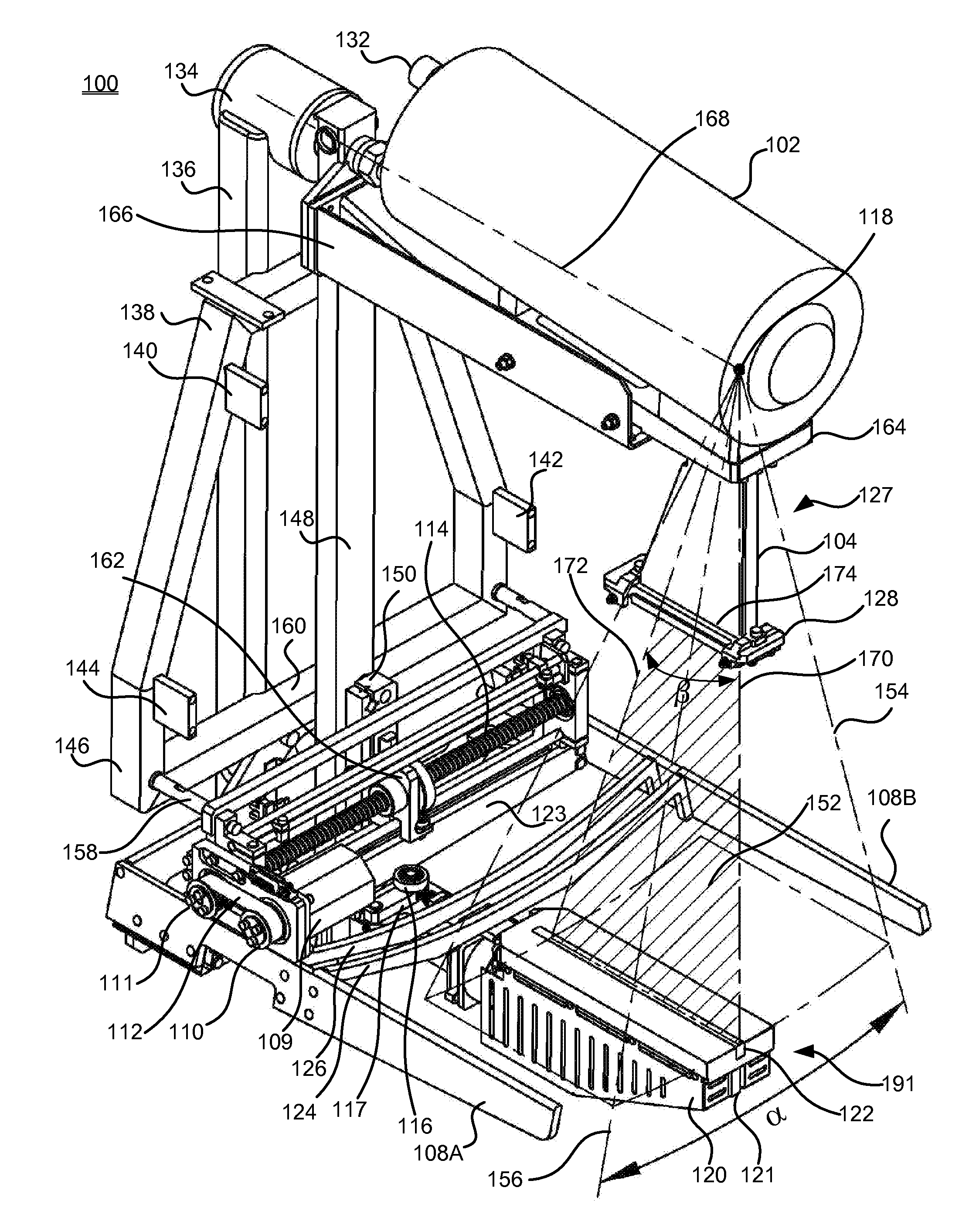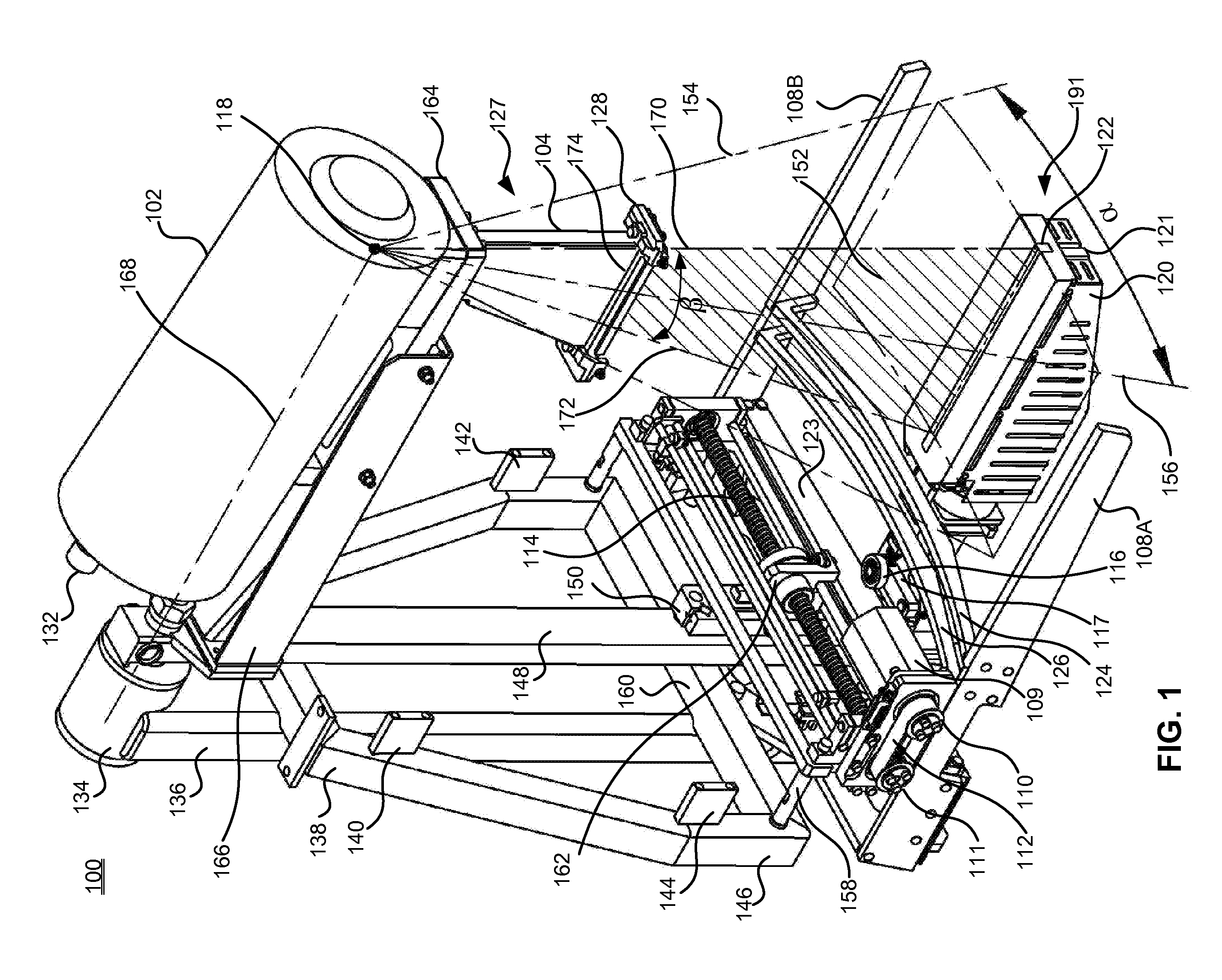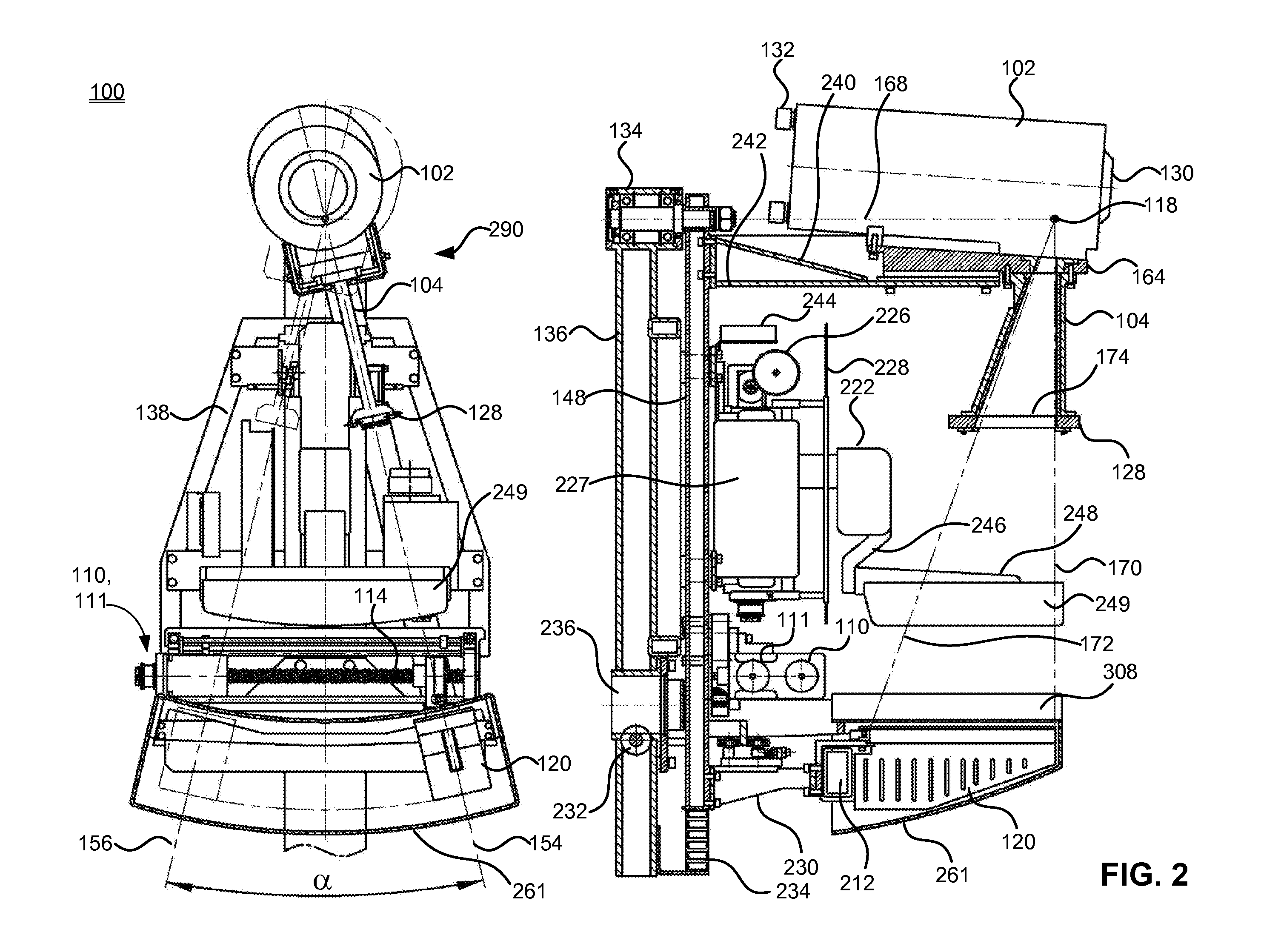Digital mammography scanning system
a scanning system and digital technology, applied in the field of full-field digital mammography, can solve the problems of limiting the spatial resolution of the resulting image, film-based systems are subject to certain limitations, and full-field mammography systems are available, and achieve the effect of accurate construction of composite x-ray images and reduction of detector vibration
- Summary
- Abstract
- Description
- Claims
- Application Information
AI Technical Summary
Benefits of technology
Problems solved by technology
Method used
Image
Examples
Embodiment Construction
[0031]Reference will now be made in detail to the preferred embodiment of the present invention, examples of which are illustrated in the accompanying drawings.
[0032]The mammography apparatus described herein is a full-field digital mammography system, designed to perform digital X-ray breast imaging for screening and diagnostic purposes (i.e., for early breast cancer detection). The digital full field mammography system is designed to be used in clinical practice to the same purpose, as a traditional analog (film-type) mammographic apparatus. The main features of an exemplary the full-field digital mammography system are (1) digital scanning X-ray image receiver with 54 micron pixel size; and (2) an anti-scatter grid free design, allowing for patient dose reduction with no loss of image quality.
[0033]Generally, the digital mammography scanning system uses scanning technology of producing digital X-ray images as follows:
[0034]An X-ray image is obtained by scanning of breast with a n...
PUM
 Login to View More
Login to View More Abstract
Description
Claims
Application Information
 Login to View More
Login to View More - R&D
- Intellectual Property
- Life Sciences
- Materials
- Tech Scout
- Unparalleled Data Quality
- Higher Quality Content
- 60% Fewer Hallucinations
Browse by: Latest US Patents, China's latest patents, Technical Efficacy Thesaurus, Application Domain, Technology Topic, Popular Technical Reports.
© 2025 PatSnap. All rights reserved.Legal|Privacy policy|Modern Slavery Act Transparency Statement|Sitemap|About US| Contact US: help@patsnap.com



